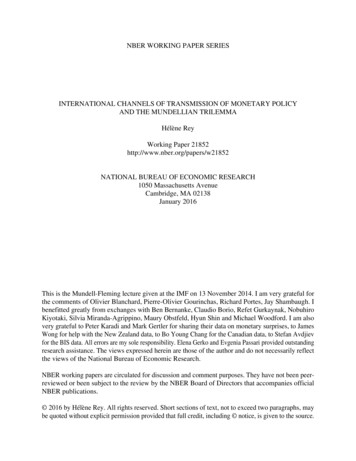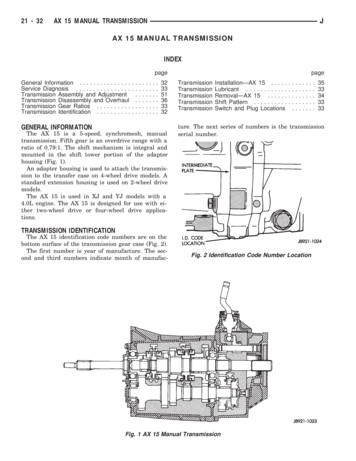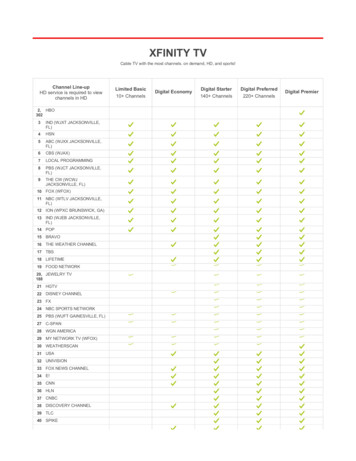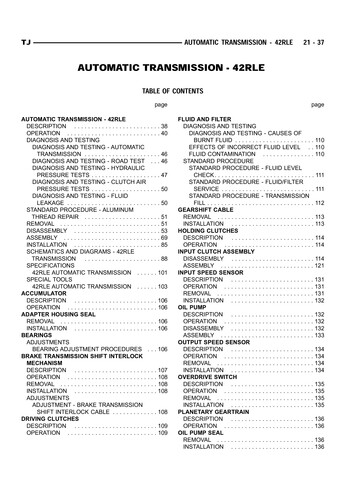
Transcription
NBER WORKING PAPER SERIESINTERNATIONAL CHANNELS OF TRANSMISSION OF MONETARY POLICYAND THE MUNDELLIAN TRILEMMAHélène ReyWorking Paper 21852http://www.nber.org/papers/w21852NATIONAL BUREAU OF ECONOMIC RESEARCH1050 Massachusetts AvenueCambridge, MA 02138January 2016This is the Mundell-Fleming lecture given at the IMF on 13 November 2014. I am very grateful forthe comments of Olivier Blanchard, Pierre-Olivier Gourinchas, Richard Portes, Jay Shambaugh. Ibenefitted greatly from exchanges with Ben Bernanke, Claudio Borio, Refet Gurkaynak, NobuhiroKiyotaki, Silvia Miranda-Agrippino, Maury Obstfeld, Hyun Shin and Michael Woodford. I am alsovery grateful to Peter Karadi and Mark Gertler for sharing their data on monetary surprises, to JamesWong for help with the New Zealand data, to Bo Young Chang for the Canadian data, to Stefan Avdjievfor the BIS data. All errors are my sole responsibility. Elena Gerko and Evgenia Passari provided outstandingresearch assistance. The views expressed herein are those of the author and do not necessarily reflectthe views of the National Bureau of Economic Research.NBER working papers are circulated for discussion and comment purposes. They have not been peerreviewed or been subject to the review by the NBER Board of Directors that accompanies officialNBER publications. 2016 by Hélène Rey. All rights reserved. Short sections of text, not to exceed two paragraphs, maybe quoted without explicit permission provided that full credit, including notice, is given to the source.
International Channels of Transmission of Monetary Policy and the Mundellian TrilemmaHélène ReyNBER Working Paper No. 21852January 2016JEL No. F3,F33,F41ABSTRACTThis lecture argues that the Global Financial Cycle is a challenge for the validity of the Mundelliantrilemma. I present evidence that US monetary policy shocks are transmitted internationally and affectfinancial conditions even in inflation targeting economies with large financial markets. Hence flexibleexchange rates are not enough to guarantee monetary autonomy in a world of large capital flows.Hélène ReyLondon Business SchoolRegents ParkLondon NW1 4SAUNITED KINGDOMand NBERhrey@london.edu
1IntroductionThe Mundellian trilemma states that it is not feasible to have at the same time a fixed exchange rate, full capital mobility and monetary policy independence. Only two of the threemay coexist. The Trilemma is a useful concept. But studying more closely recent developments in the international economy, particularly the functioning of international financialmarkets, it may be time to revisit its analytical underpinnings and to qualify its meaning ina significant way. I will make a step in this direction in this lecture.The trilemma argument builds on an arbitrage condition in international markets, theuncovered interest parity (UIP) condition, which equates returns across bond markets ina world of perfect capital mobility. There is no question that under a fixed exchange-rateregime and full capital mobility, policy makers cannot set the interest rate at the level theybelieve appropriate for monetary conditions in their economy. Should they try to free theirpolicy rate from foreign influences, they would be quickly flooded by large capital flowsreversing their measures. On the other hand, a freely floating exchange rate in principlegives a central bank an additional degree of freedom. According to the Mundell-Fleminglogic, once the exchange rate has taken care of foreign influences, the domestic interestrate is all that is needed to achieve the internal policy target, output stabilization. Thisis why the literature testing the empirical validity of the trilemma has focused on testingthe comovements of countries’ policy rates with the center country rate across exchange-rateregimes. If the domestic policy rate does not follow closely the center country, this is taken asevidence of monetary policy autonomy vis-a-vis the center. Policy rates (usually short-terminterest rates) can of course be less correlated under a floating exchange-rate than under afixed exchange-rate regime when there is free capital mobility. It is reassuring that a series ofpapers by Obstfeld, Shambaugh and Taylor (2005), Klein and Shambaugh (2013), Goldberg(2013) and Obstfeld (2015) have consistently found that short rates are less correlated to thebase country rate for flexible exchange rate countries than for fixed exchange rate countries1 .But that is not enough to show that countries can have independent monetary policies when1Long rate correlations however seem independent of the exchange-rate regime (see Obstfeld (2015).1
they have a floating exchange rate.The Trilemma misleads us by assuming that domestic monetary and financial conditionsshaping the macroeconomic situation of a country can be conveniently summarized by thisone single variable, the short-term interest rate (see also Rey (2013)). If that were the case,the extra degree of freedom gained through exchange-rate flexibility would indeed be enoughto neutralize any effects of foreign financial conditions on the domestic macroeconomy. Yet,in a world of globalized finance with different types of capital flows and financial marketimperfections, key countries’ monetary policies may affect other countries’ monetary conditions and financial stability in several ways. Financial imbalances may arise and, as aconsequence, domestic output may be affected later on. Or the presence of foreign debt maylead to powerful balance sheet effects that will alter the effect of a monetary loosening, say,in the domestic economy. In such a world, letting the exchange rate float may not be enoughto insulate the domestic economy, even if it is a large country, from global factors and permitmonetary policy independence2 .The key question is how big this issue is and how far the trilemma morphed into adilemma. Are domestic monetary and financial conditions largely determined by global factors, even in economies with freely floating exchange rates when there are large capital flows?Is there an international credit or risk-taking channel of monetary policy and how would itaffect financial stability? Is that transmission channel more potent for some currencies dueto their special roles in international financial markets? Any answer must clarify the differentdimensions along which domestic monetary and financial conditions can vary and how fareach of them is affected by domestic monetary policy versus global factors in a context offree capital mobility. Achieving this would make it possible to assess fully the potency ofthe domestic monetary policy tool (the short rate) for open economies, large or small, withflexible exchange rates in our world of large capital flows. I will not be able to provide theanswers to all these questions in this lecture, but I hope at least to advance the researchagenda.2This is of course not a statement that exchange rates or exchange-rate regimes do not matter at all northat the Mundell-Fleming Model should be discarded.2
I begin by discussing different transmission channels of monetary policy in open economiesin models with and without financial frictions. I then sketch how important the dollar is asan international currency in banking and asset management, and how this may matter for thetransmission of international monetary shocks. In a third part, I show that there is a globalfinancial cycle that is influenced by the key country in the international monetary system, theUnited States. I then present evidence that US monetary policy shocks are transmitted evento advanced countries with a fully flexible exchange rate. I conclude with some observationson the usefulness of additional policy instruments such as macro-prudential policies.2Transmission channels of Monetary PolicyThe literature (keynesian and neo-keynesian models, models with financial market frictions)has analysed different transmission channels of monetary policy. I do a brief review ofthese channels and draw some implications regarding models of monetary policy for openeconomies.Mundell-Fleming and New Open Economy MacroeconomicsKeynesian models, such as the Mundell-Fleming model, feature a strong exchange-ratechannel for monetary transmission. In the case of a monetary loosening in the center country,demand in the center country goes up, boosting in particular exports from the periphery tothe center (demand-augmenting effect). The return on the center country’s bonds falls relative to the return on foreign ones, which induces an exchange rate depreciation. This makesthe center country’s goods cheaper than periphery goods thereby leading to expenditureswitching out of the goods of the periphery (expenditure-switching effect). These two effectspartly offset each other for the periphery. As previously discussed, periphery economies canpick their interest rate to stabilize output whenever their exchange rate is freely floating.Financial spillovers are however not modelled.The international transmission channel of monetary policy works differently in the bench-3
mark neo-keynesian model3 . As noted by Obstfeld and Rogoff (2000, 2002), Corsetti andPesenti (2001) and Benigno and Benigno (2003), the optimal monetary policy trades off thestabilization of the output gap and the strengthening of the terms of trade. In these models, gains from international cooperation are usually found to be small if ”one’s house is inorder”, i.e. international spillovers are not large.4Models with financial market frictionsThe recent crisis has put the spotlight on financial market frictions and their importancefor monetary policy transmission and financial stability. I focus on two channels broadlydefined: the ”credit channel” and the ”risk-taking channel”.The literature has long ago recognized agency problems as an important source of businesscycle amplification (Bernanke and Gertler (1989)). When agency costs between borrowersand lenders are important, there is a wedge between the opportunity cost of internal financeand the cost of external finance: the external finance premium. This reflects the deadweightcosts associated with the principal-agent problem and makes credit more expensive for aborrower. This external finance premium may depend on the stance of monetary policy.Expansionary monetary policy leads to an increase in asset prices, particularly equity prices,which increases net worth of borrowers. This mitigates adverse selection and moral hazardproblems, decreasing the size of the wedge between internal funds and external funding costs.That then leads to an increase in lending and a increase in aggregate demand. I will usethe term ”credit channel” to describe this transmission channel (alternatives are ”net worthchannel”, ”balance sheet channel”, ”bank lending channel” and probably more)5 . In the3See Woodford (2003) and Gali (2008) for a precise description of the model. For a recent survey onmonetary trasmission mechanisms see Boivin et al. (2010).4The older literature on international monetary cooperation (see Bryant et al. (1988)) has also typicallyfound low gains from coordination. Farhi and Werning (2014) show that it may be optimal for central banksto smoothe their terms of trade in a way that cannot be achieved solely with the policy rate (not enoughinstruments for all the targets). Bergin and Corsetti (2014) consider a model with a production externality,which may make gains from international cooperation higher.5The financial accelerator mechanism (Bernanke, Gertler and Gilchrist (1999)) has been mostly studied inthe context of closed economies and initially applied to non-financial corporations and households (Kiyotakiand Moore (1997)). There is a rapidly growing literature modeling some type of balance sheet constraints:Lorenzoni (2008); Fostel and Geanakoplos (2009), Christiano, Motto and Rostagno (2005). Recently, therehas been a flurry of models featuring explicitly financial intermediaries (e.g. Gertler and Karadi (2011),4
presence of occasionally binding constraints, there may be fire sales and excess risk-taking:there is a pecuniary externality as agents do not internalize the decrease in prices caused byfire sales when they lever up.In the ”risk-taking channel” of monetary policy as described by Borio and Zhu (2012)and Bruno and Shin (2015b), financial intermediation plays a key role and measured riskenters the financial friction. Models usually feature risk-neutral leveraged intermediariessubject to a value-at-risk constraint6 . A positive shock raises demand for assets and thiscompresses risk premia. In turn lower risk premia relaxes further the value-at-risk constraintof intermediaries, which enables them to lever further. In such an environment, a loosermonetary policy lowers financing costs and triggers this feedback loop. Some papers tend toemphasize ”excessive risk-taking” due to a myopic value-at-risk constraint computed usingrecent measured risk parameters, others endogeneous movements in the exchange rate thatloosen the constraint. All emphasize the procyclicality of leverage induced by the constraint,which may not be optimal from a macroeconomic point of view.7 One could think of otherways of modeling excessive risk-taking such as government guarantees (bail out expectations)and limited liability and risk shifting.Empirical evidenceRecent empirical evidence on the risk-taking channel for loan books has been provided byJimenez, Ongena, Peydro and Saurina (2012), and DellAriccia, Laeven and Suarez (2013).Gertler and Karadi (2015) present evidence of an effect of monetary policy shocks on variousdomestic spread measures (US mortgage and corporate spreads) as well as on the termpremium. Miranda Agrippino and Rey (2012) show that US monetary policy affects riskpremia as well as leverage and credit growth in the rest of the world. This evidence can beconsistent with the credit channel or the risk-taking channels of monetary policy.Curdia and Woodford (2009), Kiyotaki and Gertler (2014), Brunnermeier and Sannikov (2014), He andKrishnamurthy (2013), Adrian and Boyarchenko (2014), Coimbra (2015).6See Adrian and Shin (2014) for a microfoundation of this constraint.7Another potentially related channel of transmission of monetary policy is the ”search for yield” (Rajan(2005)). In a low interest rate environment, investors take on additional risk in order to secure higher yields.This could explain portfolio shifts from short run to long run assets and to emerging market assets whenpolicy rates remain low for extended time periods.5
To sum up, the ”credit channel” and the ”risk-taking channel” are potentially importantchannels of monetary policy transmissions. Both matter for financial stability, as they haveimplications for leverage of intermediaries, credit growth and asset pricing and may leadto ”excessive risk-taking”.8 While the credit and risk-taking channels have been mostlystudied in a closed economy context9 , evidence is building up that they might be relevantin an international context as well. In an environment with foreign debt (often US dollardebt) on balance sheet, monetary policy in the domestic economy faces a tradeoff betweenstabilization of output and balance sheet effect. In this case, when the US increases interestrate, the domestic exchange rate depreciates, which stimulates domestic exports. On theother hand, this leads to an adverse balance sheet effect since the value of foreign debt goesup. As a result of this tradeoff, even with flexible exchange rates, the interest rate is notenough to achieve monetary autonomy. Aoki et al. (2015) find that the the benefit of asecond instrument (macroprudential tools) for the domestic economy is larger the bigger thevariance of the foreign interest rate shock10 .Monetary policy in the center country may therefore transmit itself internationally and beamplified via frictions in the capital markets affecting balance sheet and/or financial stabilityin the rest of world. This phenomenon will be all the more important for US monetary policythe more dominant the US dollar in international financial markets.3The geography of US dollar financeThere is a large literature discussing the importance of the dollar as an international currencyand emphasizing its various roles in invoicing, pegging, issuance of financial assets, as vehicle8It is worth remembering that credit booms have been found to be the best predictor of financial crises(Gourinchas and Obstfeld (2012), Schularick and Taylor (2012))9Bruno and Shin (2015b) is an exception for the ”risk-taking channel”10Farhi and Werning (2015) study a range of models with aggregate demand externalities or pecuniaryexternalities. In particular they analyse a model with nominal rigidities, market incompleteness and foreigncurrency debt. They too find that additional tools (in their case taxing foreign currency debt) is optimal6
currency in foreign exchange markets and in commodity trade11 . There is considerablework on the functioning of the international monetary system with the dollar as a keycurrency12 discussing the role of the US as a world banker, insurer or liquidity provider.The transmission of US monetary policy and of crises in the context of a fixed exchange rateregime (the Gold Standard) has been analysed by Eichengreen (1992). But since the collapseof Bretton Woods, the importance of the dollar in international banking, its use as a fundingcurrency for banks and asset managers and the importance of pools of dollar assets worlwidein the context of the transmission of US monetary policy shocks are still under-researched13.McCauley, Mc Guire and Sushko (2014) point out that dollar credit extended by banksand bond investors to non-financial borrowers outside the US stands at approximately 7trillion in 2014, which represents approximately 13% of non-US GDP. Perhaps surprisingly,these authors find that the top three stocks of dollar credit are in jurisdictions that are notusually thought of as ”dollarised”, i.e. the euro area, China and the United Kingdom. As apoint of comparison, the stock of off-shore euro credit was only about 3.9 trillion.As Figure 1 shows, the total amount of credit in USD issued by non-US banks locallyand cross-border (but excluding credit to the US) has grown very rapidly from the beginningof the 2000s. It completely dwarfs similar offshore credit in sterling, yen, Swiss franc oreven euro. Global banks, in particular European-based ones, have played a major rolein intermediating this dollar credit. According to Mc Cauley et al. (2015), as of March2014, 84% of dollar-denominated international bank credit has been extended by non-USbanks. In the recent period dollar credit has been extended in large proportions via theinternational bond markets, and non-banks have been purchasing heavily those dollar assets.Unfortunately, there are no data available yet to assess the amount of dollar holdings in assetmanagers’ balance sheets by jurisdictions. But since the launch of QE in 2009, hard currency11See e.g. Krugman (1980), Portes and Rey (1998), Chinn and Frankel (2005), Papaoiannou and Portes(2008), Eichengreen (2011), Prasad (2014).12See Despres, Kindleberger and Salant (1965), Kindleberger (1966), Gourinchas and Rey (2007a,b), Gourinchas, Rey and Govillot (2012) and Maggiori (2013).13See Cetorelli and Goldberg (2013), Shin(2012), Passari and Rey (2014).7
Figure 1: cross-border and local positions in foreign otes: cross-border positions and local positions by reporting banks in foreign currency disaggregated by currency (bn). Source: BIS.emerging market fund assets (mostly dollars) have grown by 350%. The top 10 global assetmanagement firms account in 2014 for more than 19 trillion in assets under management.As stipulated by the ”credit channel”, banks, companies and households find it easierto borrow when they have high net worth, as they can more easily meet required financialratios or collateral requirements or can make higher down payments. In the internationaleconomy, the dollar is used around the globe as an investing currency and a funding currency.When borrowers have short-term or floating-rate debt, decreasing the Fed funds rate directlyreduces interest payments; this improves the cash flow of the borrower. Furthermore, a decrease in the discount rate increases the value of dollar assets and their collateral value. Bythese two effects, monetary loosening by the Fed improves the net worth of households, companies and financial intermediaries, which decreases the external finance premium, regardess8
of what domestic monetary policy is trying to achieve. This may stimulate investment andaggregate demand. A contrario, when the Fed tightens, the domestic central bank faces atradeoff whenever there is a lot of dollar debt in domestic balance sheets. A depreciation ofthe domestic exchange rate increases net exports and demand but creates adverse balancesheet effects.Similarly in models in which financial intermediaries operate under value-at-risk constraints, cheap funding will tend to compress spreads, lower measured risk, relax the constraint and enable further leverage (Borio and Zhu (2012)). This positive effect on thebalance sheet could be further strengthened by an appreciation of the domestic currency(see Bruno and Shin (2015a))14 . Given the prevalence of dollar funding in the internationaleconomy as well as the importance of dollar assets in many portfolios around the globe,the credit channel or the risk-taking channel broadly defined could be a potent channel ofinternational transmission of monetary policy. I now proceed to look for it in the data.4Smoking gun: the Global Financial CycleThere is a growing literature documenting a high degree of comovement in risky asset prices,credit growth, leverage and financial aggregates around the world, a phenomenon I calledthe Global Financial Cycle in Rey (2013)15 .Risky asset prices around the globe, from stocks to corporate bonds, have an importantcommon component (Miranda Agrippino and Rey (2012))16 . So do capital flows which arehighly correlated with one another and negatively correlated with the VIX or other indicesof ”market fear” (see also Forbes and Warnock (2012)). Leverage and leverage growth are14Because of the size of the US market in the world economy, a monetary loosening by the Fed may havea non-negligible effect on US imports, which in turn will affect the income and net worth of exporting firmsin other countries.15The global financial cycle is different from the national financial cycles described by Drehmann et al.(2012) who emphasize the domestic cycles in credit and real estate prices.16Longstaff et al. (2011) find a very large role for a global component in sovereign CDS. They show thatsovereign credit spreads are more related to the US stock and high-yield markets than they are to localeconomic measures.9
negatively correlated with the VIX. Monetary conditions of the center country (the UnitedStates17 ) have an impact on changes in aggregate risk aversion and volatility, capital flowsand the leverage of the financial sector in many parts of the international financial system(Miranda Agrippino and Rey (2012)).18 While seeing a lot of comovement in asset pricesworldwide may just be reflecting market integration, the fact that these comovements are tosome extent caused by US monetary policy is important.As capital flows respond to US monetary policy, they may not be appropriate for thecyclical conditions of many economies. For some countries, the Global Financial Cycle canlead to excessive credit growth in boom times and excessive retrenchment in bad times. Asthe recent literature has confirmed, excessive credit growth is one of the best predictors ofcrisis (Gourinchas and Obstfeld (2012); Schularick and Taylor (2012)). The Global FinancialCycle can be associated with surges and dry outs in capital flows, booms and busts inasset prices and crises. One definitely needs a structural model to establish formally howdetrimental the Global Financial Cycle is. The empirical results on capital flows, leverageand credit growth are suggestive of an international credit channel or risk-taking channeland point towards potential financial stability issues.Figure 2 shows the common global factor extracted from a large cross-section of riskyasset prices (equity and corporate bonds). This global component is an important part of thevariance in asset prices around the world. As shown in Miranda-Agrippino and Rey (2012),it is highly negatively correlated with indices of ”market fear” around the world: VIX (US),VSTOXX (EU), VNKY(JP), and VFTSE (UK). Given the prevalence of dollar funding andof dollar assets in world balance sheets and the reliance on some type of collateral constraintsor value-at-risk constraints in many parts of the financial system, assessing the effect of USmonetary policy on the dynamics of this global component is of interest to test for theexistence of an international credit or risk-taking channel. Unlike in a domestic context17Other large monetary and financial areas are also likely to have an influence. The euro area, JapanChina the UK and possibly Switzerland come to mind. I only study the US in this lecture which is justifiedgiven the key role of the US in the international financial and monetary system.18Bekaert et al. (2012) analyse the effect of US monetary policy on the VIX, decomposing it into a riskaversion component and a volatility component.10
where the credit channel is viewed as an ”enhancer” of the monetary policy of the centralbank (Bernanke and Gertler (1995)), in the international context the credit or risk-takingchannel may operate in parallel to the domestic monetary policy, as the external financepremium may be determined at least in part by an interest rate which is different from thedomestic one (there are large and persistent deviations from UIP). It is also possible that thedomestic policy rate reacts to the base country monetary shock out of ”fear of floating” (seeCalvo and Reinhart (2002)), in which case the credit or risk-taking channel via the domesticrate and the center country rate may reinforce one another. Both cases would indicate someloss of monetary and financial autonomy by the flexible exchange rate country.Figure 2: Global Factor in risky asset pricesNotes: The Global Factor is estimated in Miranda-Agrippino and Rey (2012). See also Rey (2013).Shaded areas are NBER recessions.4.1Identification of US monetary policy shocks in VARsAs underlined by Stock and Watson (2008, 2012), the identification problem in structuralVAR analysis is how to go from the moving-average representation in terms of the innovations11
to the impulse response function with respect to a unit increase in the structural shock ofinterest, which is here the US monetary policy shock. One classic answer to this problem hasbeen to impose economic restrictions such as timing restrictions (some variables move withinthe month, others are slower moving). This has permitted identification of the coefficients ofinterest (see Bernanke and Gertler (1995), Christiano et al (1995)). Romer and Romer (1989,2004) introduce an alternative identification strategy: the “narrative approach”. They useinformation from outside the VAR to construct exogenous components of specific shocks.Those are often treated as exogenous shocks. However, technically they are instrumentalvariables for the shocks: they measure (typically with some error) an exogenous componentof the shock, so that the constructed series is correlated with the shock of interest but notwith other structural shocks. Hence those are “external” instruments, because they useinformation external to the VAR for identification19 . It is very clear that when one tries toidentify the credit channel of monetary policy (broadly defined), movements in asset pricesand spreads are key, as they are related to agency problems or risk shifting or to the operationof value-at-risk constraints depending on the friction considered in the model. Hence, it isimportant to use an identification strategy which allows for immediate responses in assetprices, as there is probably little delay in those market reactions. As shown in Gertler andKaradi (2015) with monthly data, an identification strategy based on timing restrictions maysometimes fail to identify the credit channel.In this paper, I mostly follow Gertler and Karadi (2015) and Mertens and Ravn (2013)for the methodology and use the Gurkaynak et al. (2005) surprise measures as externalinstruments. These are clever instruments, as they measure surprises as changes in prices ofFed funds futures in tight windows around monetary policy announcement times. As Fedfunds future prices aggregate all available information about expected monetary policy ratesprior to FOMC meetings, any change in their prices at the time of the meeting very likelyreflects a monetary policy surprise. It is unlikely that any other event dominates fluctuationsin the price of Fed funds futures in a 30-minute window around the announcement. I use19The discussion follows closely Stock and Watson (2008).12
these surprises to instrument the one-year US interest rate or the effective Fed funds ratein VARs. The advantage of instrumenting the one-year rate (as opposed to the Fed fundsrate20 ) is that the effect of forward guidance can be taken into account in the estimates.This is important in a period where the Fed funds rate has hit the zero lower bound. Foreach VAR, I test for the strength of the instruments using an F-test and implement thespecification accordingly.The structural VAR isAYt pXCj Yt j εtj 1where t
2 Transmission channels of Monetary Policy The literature (keynesian and neo-keynesian models, models with nancial market frictions) has analysed di erent transmission channels of monetary policy. I do a brief review of these channels and draw some implications regarding models of monetary policy for open economies.










